
 Author to whom correspondence should be addressed; E-Mail:
travkin@travkin-hspt.com; Tel.: +303-808-9235
Author to whom correspondence should be addressed; E-Mail:
travkin@travkin-hspt.com; Tel.: +303-808-9235
The Annals of Frontier and Exploratory Science
Vladi S. Travkin
Hierarchical Scaled Physics and Technologies (HSPT), Rheinbach, Germany, Denver, CO, USA
Tuesday, 01-Jul-2025 23:48:15 GMT
ABSTRACT
This paper materials are based on the re-approaching the pretty used for traditional school and university COHP (Conventional One-scale Homogeneous Physics) education - that is the Franck-Hertz Experiment (FHE) on scattering and collision of electrons with "atoms" of mercury Hg or neon Ne.
Throughout the time since 1914 there is none-stoppable interest and related studies of this experiment features. Nevertheless, there are almost silent understanding among physicists interested in clarification of FHE some strange aspects that those aspects are not succumbed to general COH physics efforts.
We consider many different theories and methods that are valuable parts of 2nd Physics (2dP) explanation, models, and comparison of FHE with the COHP's theory, model and graphycal presentation of it.
First two great areas of dissimilarities are the structureness of particles involved and great difference in electrodynamics applied.
All particles in a chamber of FHE are having structures - the structureless particles appeared at the beginning of XX in COHP primarily because there were no even definition(s) of Heterogeneous medium and physical fields belonging to inside of this medium.
Also - there was only one hint in Homogeneous mathematics of first half of XX on how to treat the mathematical physics governing equations within that kind of media? That great name is Kasterin. There was, while still now is, no idea on - What are the Heterogeneous media, their Physics and Mathematics? Especially for the small atomic and sub-atomic scales.
Through the decades in spite of resistance that COHP adepts exhibited everywhere having the heavily vested interests in conventional Homogeneous One-phase physics understanding and teaching, other physicists have been developing the more accurate and nature following physics understanding and theories related to that vision of nature.
We follow that understanding of Atomic and Sub-Atomic Scales (ASAS) physics comprehension in reading the whole range of Polyphase-Polyscale-Polyphysics (3P) phenomena within the chamber of FHE. Many issues of this experiment have description in 3P that have been developed and exhibited in our previous other theories for different physics areas and we referring to them.
Of course, it would be inappropriate to expect for the first time 3P theory and explanation of FHE to obtain in addition the numerous problems solution for this great experiment totally within methods of Hierarchical Scaled Physics (HSP) that is a part of 2dP. That task thousands of COHP physicists have not been getting throughout of more then a century long studies.
Nevertheless, the scope of issues that got the first hand HSP conceiveness, formulation of models and governing equations presents itself the very large theme in 2dP that might find a financial suport for resolution in the next 20-40 years.
Key words: Franck-Hertz Experiment; Heterogeneous media; Polyscale; Multiscale modeling; Heterogeneous electrodynamics; Sub-atomic particles; Sub-atomic Mechanics; Sub-atomic Electrodynamics; Sub-atomic modeling; Particles modeling; Elementary particles dynamics; Gauss-Ostrogradsky theorem; WSAM theorem; Averaging theories; Collective interaction; HSP-VAT; Scaleportation; Polyscale physics; Electrons; Photons; CMBR; Electrons, Photons in Aether.

 Author to whom correspondence should be addressed; E-Mail:
travkin@travkin-hspt.com; Tel.: +303-808-9235
Author to whom correspondence should be addressed; E-Mail:
travkin@travkin-hspt.com; Tel.: +303-808-9235
--------------------------------------------------------------------------------------------------------------------------------
This is that famous Experiment of 1913-14 - with which leading physicists with N.Bohr as the author of planetary atom's model - Started to Cheat physicists and the public with that like "Evidence" that Atoms are the Spherical Charged Massive Objects (Planetary Model of Atoms) that like are not Covered by Usual Energy, Dynamics Classical Mechanics, Physics. Starting the one of postulates of Conventional One-scale (Orthodox) Homogeneous Physics (COHP) that had screwed the physics in total in XX.
The loud statement? Meanwhile, this experiment was about the discontinued portioned exchange of mass-energy between the particles in a rarefied vapor. The great deal of that process is not fully understood even nowadays.
The problems here with this experiment are with the COHP interpretation ("explanation") of the Interaction of particles (electrons) and atoms in a volume of tube in experiment.
In many sections, sub-sections, papers in this and other sites we've already deliberated thorough analyses about some of very famous experiments and methods that used by COHP for the own loud PR and publicity of their only theories and methods to describe, explain everything (almost everything) that humanity encountered in nature. Fortunately for physics and its health there are quite different explanations for these experiments and theories exist in 2nd Physics (2dP) [1-15].
That was the great need for Heterogeneity Subjects in ASAS (Atomic-Sub-Atomic Scales) physics to obtain an ability for explanation of Polyscale-Polyphase Phenomena in experiments like this one - FHE.
Unfortunately, that goal was too premature and impossible to reach at the beginning of XX.
The typical reading from the instructors texts "explaining" the FHE is as the following:
Electrons are accelerated in the Franck-Hertz apparatus and the collected current rises with accelerated voltage. As the Franck-Hertz data shows, when the accelerating voltage reaches 4.9 volts, the current sharply drops, indicating the sharp onset of a new phenomenon which takes enough energy away from the electrons that they cannot reach the collector. This drop is attributed to inelastic collisions between the accelerated electrons and atomic electrons in the mercury atoms. The sudden onset suggests that the mercury electrons cannot accept energy until it reaches the threshold for elevating them to an excited state. This 4.9 volt excited state corresponds to a strong line in the ultraviolet emission spectrum of mercury at 254 nm (a 4.9eV photon). Drops in the collected current occur at multiples of 4.9 volts since an accelerated electron which has 4.9 eV of energy removed in a collision can be re-accelerated to produce other such collisions at multiples of 4.9 volts. This experiment was strong confirmation of the idea of quantized atomic energy levels. "
The surprising interpretation of the key phenomenon in FHE - as of the inelastic collision of electron with the "atoms" of Hg together with discontinued batched change (exchange) of mass (energy) between the particles - not between the electrons and so called "spherical atoms" - is one of the most old (more then 90 years of creation) fairy-tales of COH physics.
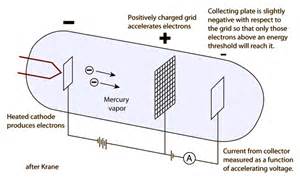
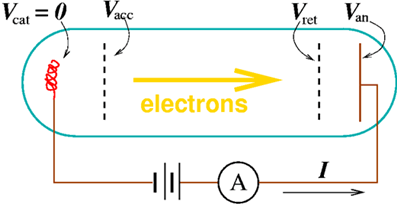
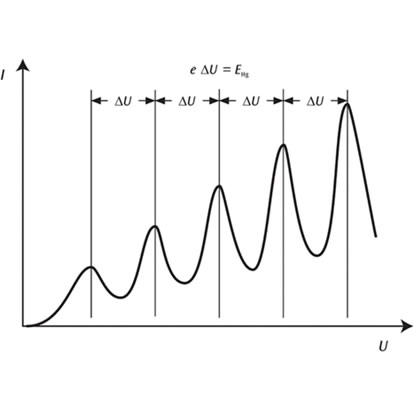
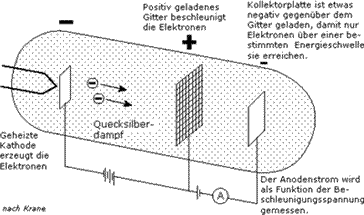
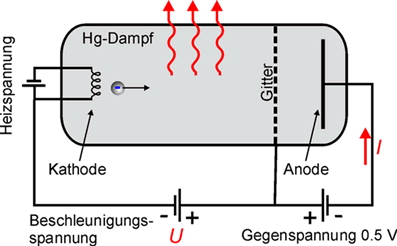
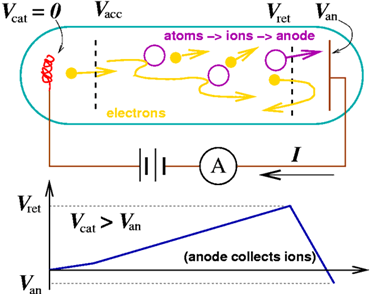
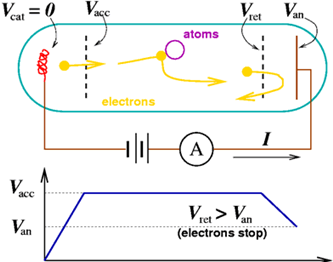
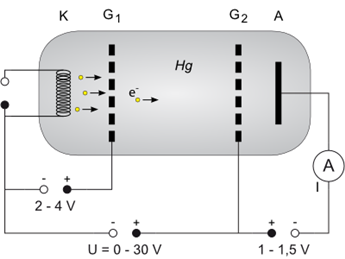
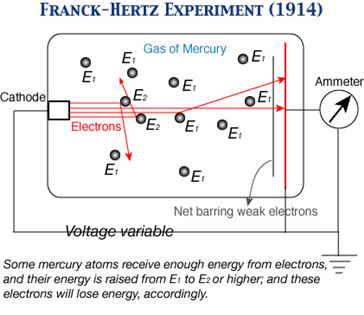
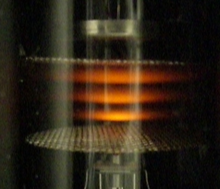
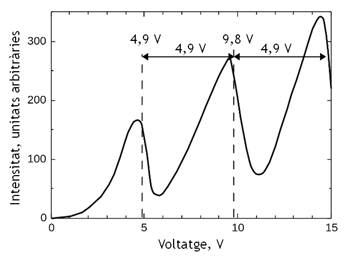
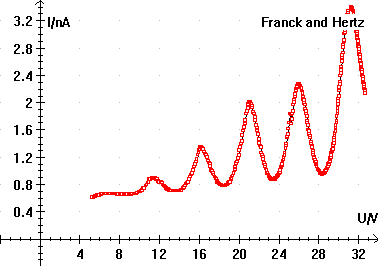
This pictorial just verbal (like the above one) qualitative depiction of process inside of the FHE tubes with the vapors of Hg or Ne is not sufficient and even scientific. There are no quantitative qualified particulate theory and models in COHP for FHE (QM wordings are not qualified).
That was noticed many decades ago - we can mention also the many decades inquiries by P.Nicoletopoulos [16]. Note to this - that P.Nicoletopoulos was not in any piece of him - a dissident in COHP. No - he was an orthodox physicist who for many decades studied those hidden controversies in FHE theory and experimental setups.
The explanation of the current intensity that collected at the anode receiver in COHP FHE that is taught in universities (and schools) courses is just the wrong imaginable sequence of events.
Again - no theory of dynamics and cannot be a reasonable theory for FHE in COHP.
Why is that?
By the way - the physical entities for fields are not equal to the mathematical models for physical fields. Either of pure material origin or of the invoked nature by material actions.
For many decades in COHP to hide the presence of the aether physicists name the Mathematical Models for mathematical presentation of physical subjects as the ALREADY proven and existing physical entities.
In this way - a mathematical function of mathematical presentation for some physical field - not often of material nature - is made up as the legitemate material physical field? Yes, they do this regularly?
Meanwhile, it's not always the truth.
The cross-section definition in COHP was created with the same purpose as the porosity in Flow in porous media in Fluid Mechanics.
While in Atomic-Sub-Atomic-Scale (ASAS) physics the cross-section should be estimated, and more on that - should be improved with the aim as for the creation of physical tool similar to a one that have been corrected and advanced in HS physics along with the porosity coefficient tool and mechanisms for Scaled Two-phase flow in porous media [17-23].
It should be said, at the meantime, regarding the FHE that even now after more than 100 years of this experiment first publication - there never have been created, developed a theory and real dynamics explanation mechanism for this expriment - Wikipedia (kind of) texts cannot be accounted for a "theory."
We mean that a creditable explanation, not as this childish lies that fed up to students in the COHP courses. The reasonable model for the FHE should consider and have attributes for modeling the dynamics and EM fields for particles, atoms in structured form as long as of the aether interaction with all of these.
This goal is not possible to achieve in COH physics.
That is quite natural starting to talk on the deception that COH physics put into the FHE texts as from the pictures that were for many years put before the pupils, students and professional eyes - that they started to see them as the true nature pictures ?
Meanwhile, when we can see the COHP pictures related to interaction of electron(s) with the "atom" ( the word atom is taken here in "" for a purpose)


For example, (Franck-Hertz_exper-9.gif) above shows incorrect scheme inside of the tube and Incorrect direction of collected Current after anode - the current is coming from the plus or from the minus connection of the battery!
While it should go - TO the minus pole of the battery.
Kanarev has deliberated on this issue with the great detail in [24-26].
Explaining the form of curve for the current collected at the anode - the ALL
(checking with available phenomena) wavy behavior of the
(current/(acceleration second grid voltage
U
 ))
function as with the qualitative primitive form explanation - for >100
years in COHP was not given a theory, for modeling in this experiment?
))
function as with the qualitative primitive form explanation - for >100
years in COHP was not given a theory, for modeling in this experiment?
And this is not accidental really.
The structureless features of particles and atoms, their EM fields cannot give any chance to make up the model.
Also - in all Figures on J.Franck-G.Hertz experiment on Electron Scattering in a Mercury Vapor - not surprisingly for COH physics the images of drawn particles and atoms - they are comparable in size. And there are no details of collision mechanisms including structure and morphology.
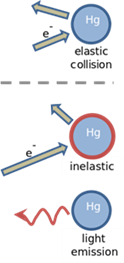
Regarding the periodic wave like (averaged) character of mass particles collisions in the experimental chamber Wikipedia says (https://en.wikipedia.org/wiki/Franck-Hertz_experiment#cite_ref-FH1_2-1 ):
"With neon, the Franck--Hertz voltage interval is about 19 volts, and an orange glow appears near the grid when 19 volts is applied. This glow will move closer to the cathode with increasing accelerating potential, and indicates the locations where electrons have acquired the 19 eV required to excite a neon atom. At 38 volts two distinct glows will be visible: one midway between the cathode and grid, and one right at the accelerating grid. Higher potentials, spaced at 19 volt intervals, will result in additional glowing regions in the tube."

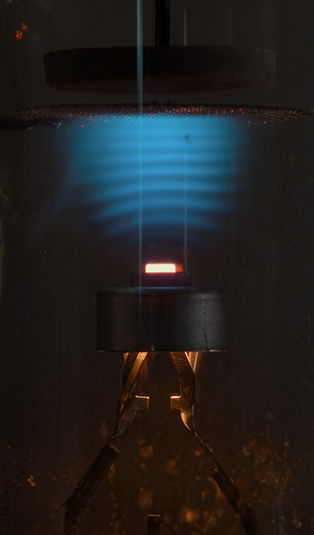
How the collisions are happening and How the mercury Hg or Ne atoms are emitting the light (that is still the flux of photons) for more than 100 years COH physics still cannot find out?
Covering themselves with the Fig Leafs of Quantum Mechanics and such other pure Mathematical Objectless Physics.
They even stopped to speculate on these topics.
Up to now we don't know - How the electron approaching the atom and What is happening then ? The only speculative mathematical exersices are not convinsing [2-6,27-30].
Thanks to M.Gryzinski [27-30] physicists (a few of them actually) started in 1960s to appreciate again the Classical Mechanics in application to Atomic-Sub-Atomic-Scale (ASAS) physics. Since that time many physicists would join and make some work for real structured ASAS subject matters, but are afraid of bad cosequences for their personal life.
Regarding the presence in the FHE tube the wave like volumetric light emitting areas - similar to standing wave in the plasma volume - then we can support the HSP based idea of "Unification" in explanation of the "particle-wave" Two-scale dynamics experimental confirmation [3,4,7].
Many other phenomena in physics support the similar to "wave-in-water" dynamics of great number of molecules of a substance (water or other fluids) that under the prevailing impact, force can and actually exactly behave as the wave demonstrating features within contained medium [1-4,6,7].
Electrodynamics in the media with ASAS particles and the aether has been firstly presented as the 3P phenomena in our rather numerous studies partly published in [9-14,30-33] and in other explorations.

The misleading thing in COHP electrodynamics is the blind belief in the connection between the EM charges and EM "waves" that is appeared from the "sea waves" ideological transformation of MHL (Maxwell-Heaviside-Lorentz) impaired equations [3-4,7,10,11] to the mathematical (we repeat - mathematical) forms that usually are characteristic for again approximately derived the wave dynamics equations for continuum media.
The pretty important is the fact that electromagnetic "wave" is actually rather mathematical, but not physical characteristic of electrodynamics in any medium.
Electromagnetism is the feature and quality belonging to electromagnetic particles, mostly of sub-atomic scales, and a medium in which those particles are distributed and/or moving through.
There is no so called "electromagnetic" field without charges and medium where those charges are distributed. Media itself without charges cannot create the "electromagnetic" field.
That means when researchers are saying or treating the "electromagnetic" field - they treat the mathematical implementations of charges that are moving within the media [24-26,9-14,31-33]
It is inevitable consequence that the structureless shapeless conjectures intrinsically owned by QM, QF, Atomic Physics for Point-Mass-Charge-Spin (PMCS) imagined non-existing mathematical mainly sub-atomic particle and atom's models in Particle Physics, Atomic Physics, plus the structureless components of nucleus and nucleus itself all in COHP - are just the creations of the powerless times at the beginning of XX related to the fields in physics for those then no credible tools and theories existed [1-15,17-23,31-33] etc.
The great reason for seeking the volumetric models of sub-atomic particles is that in this way the tight connection of sub-atomic electrodynamics with the dynamics of particles themselves and with the overall collective Bottom-Up and Top-Down scaleportation of many properties of a medium, that is the substantial part of all characteristics of media.
The problem with the dynamics of sub-atomic particle is that their momentum equations are insufficient in COHP even at the lower scale governing equations with the short-handed Lorentz's force model that is working for more than a century and brought in during this period many problems in particle and general physics. At the same time, the COH physics itself can not average any equation of the sub-atomic phenomena due to its own internal inability.
The number of momentum and electrodynamics equations for the Two-phase Two-scale (at least) particulate and the virtually "continuum" aether media for the main volume in the FHE is incredible (more than 20 equations with the following hard core Hierarchical mathematics to crack these equations [1-2,7-15,17-23,31-33]) that it is scarcely understandable for managerial staff of government science supporting agencies while provisionally needed in hardly succumbed change of situation with education in physics, see [1-4,10-14] and other publications.
Another interesting point in the COHP interpretation of Franck-Hertz Experiment (FHE) is the interpretation of the "COLLISION" as, for example, in the piece - "the electrons are deflected by scattering from the atoms of vapor in the tube." ?
From the Atoms? Can it be shown in more detail - How electrons are meeting "atoms" of Hg or Ne?
and - What does it mean - Scattering of electron on atom?
Attention students - This is one of the hidden tricks of COHP in explanation of the "collision" of the "particles" or even of particles and atoms.

As we already wrote on this issue above - in COH physics the images of drawn particles and atoms - they are comparable in size. and there are no details of collision mechanisms including structure and morphology - just imbalance mechanics and mathematics.
And this conjectural approach based on imaginable mathematical mostly methods to model the interaction of structureless "particles" in close vicinity to each other - this methodology, the methodology of just mathematical methods that might be suite to outcomes of Homogeneously interpreted experiments - was and is a disaster for many fields in physics for decades.
The matter, the one of the main wrong issues is that in COHP there are no correct dynamics equations for a free electron dynamics. Existing forms of equations for Point-Mass-Charge-Spin (PMCS) electron momentum dynamics and eventually external and collective interaction electrodynamics are incorrect - we shown this in many papers and chapters in this and other websites [1-7,9-15,31-33] as, for example, -
because the Points-Dots "particles" cannot scatter, cannot reflect another Point-Dot-Electrons. They don't find one another, because they don't have any Volume to meet one another.
That is precisely for this concern in COHP was introduced falsefully the special distance from the "point-dot" particle - before starting even to talk about any collision.
Also - How the Point-Mass-Charge-Spin (PMCS) electron collides with the orders of magnitude larger object as an atom Hg of mercury or neon Ne?
This is the Mystery in COHP - that is why they always refere in these situations to the false arguments that it is for "quantum vacuum" or "physical vacuum" reasons that the exact dynamics of momentum and electromagnetism are not describable in terms of "location" of the objects ?!
First, who subjected these unphysical - rather the theological, pure mathematical arguments - wrong anyway to a scrutiny, was M.Gryzinski [27-30] (and references therein):
In some COHP explanation texts there is no difference taken between the anode and the Grid located before the anode?
There is no understanding - that the grid - the metal network (mesh) is at the same time a pretty powerful resistance for any flux of particles!
And No theory exists in COH atomic, sub-atomic physics that could consider these Heterogeneous Three- Four- phase (including an aether) momentum and electrodynamic transport inside of the media.
But it exists in HS physics - for any scale of Heterogeneous transport.
Theory and modeling for transport in the FHE can be developed and done based on already known physics and math of HSP [1-15,17-23,31-33].
Wrong Explanation of Physics in the FHE - had been developed as for the One-phase (particulate) One-scale Homogeneous transport in the NOT ARTICULATED MEDIUM of inside the "tube", "barrel" or chamber of the FHE environment.
For example, we can read in one of experiment instruction text that:
(citations from the internet texts, instructions: http://advlabs.aapt.org/conferences/2015/docs/Keysight-Franck-Hertz.pdf\ )
...."Consider first what happens as the filament is heated, thus raising the average energy of conduction
electrons in the metal. As the temperature increases, a greater fraction of the electrons have
kinetic energy exceeding the work function of the cathode material (platinum),

 .
.
Some of these even reach the anode and a small current (e.g., nanoamps) flows. When the accelerating
voltage

 is increased from zero, filament electrons are accelerated toward the grid and
a much
is increased from zero, filament electrons are accelerated toward the grid and
a much
greater current reaches the anode. If

 ,
some of the emitted electrons reach the anode and
,
some of the emitted electrons reach the anode and
the electron current is registered. The path of current in this circuit passes through the two power
supplies, the filament, the mercury vapor in the tube, and through the ammeter. Not all the electrons
make it to the anode: the "beam" really isn't a beam, and the trajectories spread out over a
large range of angles. The planar geometry does improve the situation. As the accelerating voltage
increases, the anode current increases because the electron trajectories are more focused, and
the electrons are deflected less by scattering from the atoms of vapor in the tube. The anode current
is observed to rise faster than linearly with

 ."
."
Just one substance medium - the particles, and nothing more in the tube. Who needs to mention something like "vacuum" - it's not worse to mention as a medium! Really?
In Wikipedia they say regarding the wave like volumetric light emitting areas in a chamber of FHE with the neon gas that:
..."In instructional laboratories, the Franck--Hertz experiment is often done using neon gas, which shows the onset of inelastic collisions with a visible orange glow in the vacuum tube. With mercury tubes, the model for elastic and inelastic collisions predicts that there should be narrow bands between the anode and the grid where the mercury emits light, but the light is ultraviolet and invisible. With neon, the Franck--Hertz voltage interval is about 19 volts, and an orange glow appears near the grid when 19 volts is applied. This glow will move closer to the cathode with increasing accelerating potential, and indicates the locations where electrons have acquired the 19 eV required to excite a neon atom. At 38 volts two distinct glows will be visible: one midway between the cathode and grid, and one right at the accelerating grid. Higher potentials, spaced at 19 volt intervals, will result in additional glowing regions in the tube.
An additional advantage of neon for instructional laboratories is that the tube can be used at room temperature. However, the wavelength of the visible emission is much longer than predicted by the Bohr relation and the 19 V interval. "

Mostly the fairy-tale explanations.
Students in schools and universities shown these figures of J.Franck-G.Hertz Experiment (FHE) and are told that these pictures are the depiction of physics inside of the chamber with mercury Hg or neon Ne gas?
p>

They are not only in the figures on J.Franck-G.Hertz experiment on Electron Scattering in a Mercury Vapor - not surprisingly for COH physics the images of drawn particles and atoms - they should not be comparable in size. And there should be the details of structures and dynamics mechanisms and modeling.
These pictures in - Figs. 1, 2 are just the tip of an iceberg that like here "depict" to students and public - What is the "particle" (electrons in FHE) and an atom by their graphycal representation that COHP "suggests" to public - that these are the truthfull images for both - a particle and an atom.
This should be told to students and public each time - as when in a printed material, text is something written about or presented as if some imaginable nature or character seen as a circle, fat dot, as a some volume of particle - that each time should be told to readers - THIS IS A FICTICIOUS IMAGE OF PARTICLE - PARTICLE HAS NO VOLUME, BUT COORDINATES ONLY.
And this is a firm, hard rule established in the ethical side of the publishing law and culture.
Here in COH Physics they always draw the false image of a particle while not saying to people - that it is No Way to Understand and Accept that this image is a Volumetric Object!
That in COHP the ASAS particles are the Point-Mass-Charge-Spin (PMCS) objects - but not the particles as we in humanity always think about a particle - as something small, but still of some volume an object.
The sizes of particles and atoms cannot be even drawn in a normal comparable manner in figures without the special techniques and of strong remarks on difference in size of ~(2-5) orders of magnitude. That is a great difference - and it always should be mentioned about in figures or figure captions. Meanwhile, in COHP pictures that students and public can observe they are always within the comparable sizes as in Fig. 7.
It is important to stress out here - that the difference in the size and other morphological features in sub-atomic particles images are not just innocent errors - those are errors specifically made such on purpose and are of great physical importance for a theory and modeling [24-26,9-14,31-33].
The reasons that these errors are specifically dumb among publications and courses of COHP are of tremendous value for physics in general.
When we conceive, make and develop in our time the stage of the art in physics that runs throughout the end of XX - beginning of XXI some group of concepts, ideas, representations for a kind of fresh (the word "new" for physics is so worn out) physics that use just the devastating, unfortunately, for COHP, elements - it's always being rejected at the beginning. Exclusively because of the vested interests.
That is happening right now for ~(60-70) years in physics when a small number of physicists making advancements for getting us out of COH physics.
COH physics has been outdated, in many parts it is simply wrong, incorrect from the end of XIX - since the discovery of electron and acceptance of MHL electrodynamics [1-9,15,24-33].
Not so many physicists have made contributions to 2nd physics. The works aiming for breaking out of COHP anyway need the kind of intermediate theories that connect, intervine with the parts of COHP (correct parts) and of 2nd physics [1-4,7,9,15,17,22,24-26].
Many of these intermediate theories should be created in between the ASAS physics of COHP correct parts and Physics 2 (2dP) [1-4,7,9,15,17,22]. We had studied a few attempts of these intermediate COHP theories in our works [3-4] and other publications. Right now the moves toward 2dP from COH physicists are not positively successful [3-4,1-2]. Or partially successful as in physics of M.Gryzinski [27-30]. Many reasons, arguments were put on the table in these deliberations, where we thoroughly investigated the COHP attempts to use still the COHP tools and methods when the goals are within the HSP phenomena.
That means the theory of FHE relating phenomena should be continued within the prospects of 2dP.
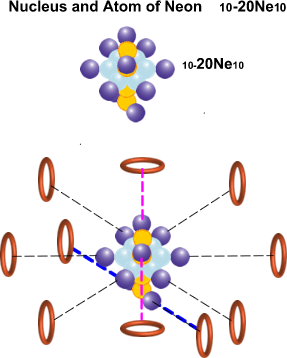
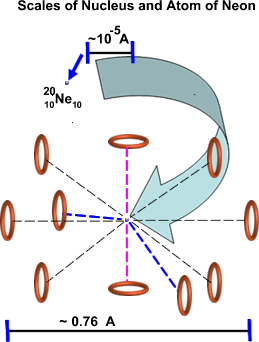
That means the Ne atom is actually the space filled by not of emptiness with electromagnetic constants (?) - but the aether. Do you realize this? COH physics doesn't, pretending that doesn't.
The main areas (themes) of interest for theoretical and experimental studies of collisions in FHE are as the following:
1) The Structure and Modeling of Particles and Atoms in a Vapor as a Singular Particulate Medium and with the Presence of Intermedium Aether.
2) The Scaled Polyphase (2P) Vapor Atoms Dynamics and Electrodynamics. No Homogeneous MD - it's Incorrect.
3) Scaled Dynamics and Electrodynamics of Electrons, Their Structure. QM as a Collection of Data, Often False Due to the One-scale Homogeneity of Everything in Them.
4) What is the Collision of ASAS Particles? Their 2P Dynamics and Electrodynamics. No QM Appreciation, but as of Database.
5) Polyscale Polyphase (2P) Dynamics and Electrodynamics of Arrays of Electrons and Photons in Vapors of Hg and Ne.
6) 2P Permiation of Particles Through the Charged Screens (Grids).
This list is not final and is outside of COHP capabilities. Some of the themes we have been started to advance in our work over previous other important issues in 2dP [1-15,31-33].
We analyzed the set-up and physics of the Franck-Hertz experiment staying on the base of Hierarchical Scaled Physics already well developed determinations and methods.
That means the particles are the volumetric objects, but not fictitious point-like particles of conventional Homogeneous particle physics. Students are never told the real meaning of this point-like kind presentation for sub-atomic particles.
There was the lack of needed directly applicable concepts, methods and mathematics in the past ~100 years for the sub-atomic particles because they have been simplified to the volumeless, shapeless only mathematical point-like objects with assigned properties. This is unphysical approach indeed [3-4,1-2].
We can re-iterate some of the conclusions from [4] that the internal properties of ASAS media those always are present in the great experiments that are considered as the base for contemporary physics - Fizeau experiment in XIX, D.Miller, D.Miller and E.Morley, and A.Michelson and E.Morley experiments in XX, Franck-Hertz experiment, Stern-Gerlach and Davisson-Germer experiments - all of them - or more correct is to say - that their incorrect Homogeneous One-scale interpretations established for more than a century the incorrect theoretical COHP understanding, interpretations of the world's physical phenomena [4 and references therein].
Because all these wrong idealistic XVIII style interpretations and theories brought in the "relativity" ideas, relativity principles in electrodynamics by H.Poincare and H.Lorentz (Lorentz and of others transformations) that they in turn relied on just mathematical imbalances in the MHL modified Homogeneous One-scale electrodynamics [4,31-33].
Meanwhile, revisiting and re-assessment the physics inside of the Franck-Hertz experiment "tube" must give quite of the data, those issues that characterize the physics of ASAS down to the key dependences.
1. Travkin, V.S., "What Classical Mechanics of XVIII Provided in XX Has Done Wrong to the Base of Mechanical Science Including the Classical Mechanics of Continuum Particles and Conventional Orthodox Homogeneous Particle Physics", http://travkin-hspt.com/rottors/classmechwrong/classmechwrong.htm, (2014)
2. Travkin, V.S.,"The Major Forces Have Been Missing From Governing Equations for Dynamics of Sub-atomic and Continuum Particles, Bodies in XVIII - XX ", http://travkin-hspt.com/rottors/forcemissing/forcemissing.htm, (2014)
3. Travkin, V.S., "Classical Mechanics Attempts for Description of Atomic Physics (ClM One-scale One-phase Homogeneous Atomic Physics - ClMO2HAP) Phenomena ," http://travkin-hspt.com/parphys2/clmechonesc1/clmechonesc1.htm, (2014)
4. Travkin, V.S., "Spinning or "Torsion" Mechanics in "Homogeneous" Media? Is it Possible?" http://travkin-hspt.com/rottors/torsmechhom/torsmechhom2.htm, (2015)
5. Travkin, V.S., Particle Physics - Heterogeneous Polyscale Collectively Interactive, http://travkin-hspt.com/parphys/index.htm, (2011)
6. Travkin, V.S., "What is the Particle Physics Now?" http://www.travkin-hspt.com/parphys/whatispp/whatispp.htm , (2011)
7. Travkin, V.S. and Bolotina, N.N., "The Classical and Sub-Atomic Physics are the Same Physics," http://travkin-hspt.com/parphys/pdf/51_PrAtEd-QM-Ref-2HSPT.pdf, (2013)
8. Travkin, V.S., Scattering Modeling in Optics using One Scale , http://www.travkin-hspt.com/optics/optscattering.htm, (2003-2008)
9. Travkin, V.S., Solid State Polyscale Physics. Fundamentals, http://travkin-hspt.com/solphys/index.htm, (2014)
10. Travkin, V.S., "Two-Scale Three-Phase Regular and Irregular Shape Charged Particles (Electrons, Photons) Movement in MHL Electromagnetic Fields in a Vacuum0 (Aether)," http://travkin-hspt.com/parphys2/abstracts/twoparticlesshort-ab.htm, (2013)
11. Travkin, V.S. and Bolotina, N.N.,"Two-Scale Two-Phase Formation of Charged 3D Continuum Particles - Sphere and Cube From Electrons in a Vacuum0 (Aether). An Example of Scaleportation of Charge from the Sub-Atomic to Continuum Charged Particles, Conventional MD Cannot be Applied," http://travkin-hspt.com/parphys2/abstracts/subtocontin-ab.htm, (2013)
12. Travkin, V.S. and Bolotina, N.N., "One Structured Electron in an Aether (Vacuum0) Electrodynamics, Many Electrons in an Aether Fixed in Space - the Upper Scale Galilean Electrodynamics ," http://travkin-hspt.com/parphys/abstracts/stillelectrons-ab.htm (2011)
13. Travkin, V.S. and Bolotina, N.N., "Electrons and CMBR (Cosmic Microwave Background Radiation) Flux of Photons in a Vacuum0 (Aether) - Two-Scale Galilean Theory ," http://travkin-hspt.com/parphys/abstracts/elcmbr-ab.htm, (2010)
14. Travkin, V.S., "Top-Down and Bottom-Up Hierarchical Processes in the E-Cat Nuclear Reactor. Physics 2 ," http://travkin-hspt.com/coldlenr/ecathier1/ecathier1-ab.htm, (2012-2013)
15. Travkin, V.S.,Atomic and Subatomic Physics 2 - Elements 3P, http://travkin-hspt.com/atom2/index.htm, (2003-2015)
16. Nicoletopoulos, P., "Up-to-date literature on the Franck-Hertz experiment," http://users.skynet.be/P.Nicoletopoulos/references.htm, (2012)
Nicoletopoulos, P., "Critical potentials of mercury with a Franck--Hertz tube," Eur. J. Phys., Vol. 23, pp. 533--548, (2002)
17.Travkin, V.S., Catton, I., Transport Phenomena in Heterogeneous Media Based on Volume Averaging Theory, in Advances in Heat Transfer, Vol. 34, New York: Academic Press, pp. 1-144, (2001)
18.Whitaker, S., The Method of Volume Averaging, Springer, Berlin, Heidelberg, (1998)
19.Slattery, J.C., Momentum, Energy and Mass Transfer in Continua, Krieger, Malabar, (1980)
20.Kaviany, M., Principles of Heat Transfer in Porous Media, 2-nd Ed., Berlin, Heidelberg, Springer, (1995)
21.Gray, W.G., Leijnse, A., Kolar, R.L., Blain, C.A., Mathematical Tools for Changing Spatial Scales in the Analysis of Physical Systems, CRC Press, Boca Raton, (1993)
22.Travkin, V. S., Continuum Mechanics of Heterogeneous (Ht) Media; Elasticity, Plasticity, http://travkin-hspt.com/elastic/index.htm, (2005)
23.Travkin, V.S., Catton, I., Porous Media Transport Descriptions - Non-Local, Linear and Nonlinear Against Effective Thermal/Fluid Properties, in Advances in Colloid and Interface Science, Vol. 76-77, pp. 389-443, (1998)
24. Kanarev, Ph.M., http://kanarev.innoplaza.net, retrieved 01/25/2014
25. Kanarev, Ph.M., Answers to Microworld Questions, http://www.micro-world.su/ Folder "Answers"; retrieved 05/05/2013
26. Kanarev, Ph.M, Introduction to New Electrodynamics, http://www.micro-world.su/ Folder "Books"; retrieved 05/05/2013
27.Gryzinski, M., The Atom Deal, Homo-Sapiens, Warsaw, (2002) (in Polish)
28.Gryzinski, M., On Atom Precisely. 7 Lectures on Atomic Physics, in Proc. V-th Siberian Interdisciplinary Conference on Mathematical Problems of Physics Space-Time Complex Systems (STP-2004), Iss. 1, Novosibirsk, (2004) 93p. (in Russian)
29.Lavrentiev, M.M., "Ad Disputandum," in The Search Mathematical Laws of the Universe: the Physical Ideas, Approaches, Concepts, (Vol. 2), Novosibirsk, pp. 3-15, (2004) (in Russian)
30.Yeganova, I.A., "Atomic Physics of Gryzinski and the Main Purpose of the Conference Physics SpaceTime - PST," in The Search Mathematical Laws of the Universe: the Physical Ideas, Approaches, Concepts, (Vol. 7), pp. 18-36, (2006) (in Russian)
31.Travkin, V. S., What's Wrong with the Pseudo-Averaging Used in Textbooks on Atomic Physics and Electrodynamics for Maxwell-Heaviside-Lorentz Electromagnetism Equations, http://travkin-hspt.com/eldyn/maxdown/maxdown.htm, (2009)
32.Travkin, V. S., Incompatibility of Maxwell-Lorentz Electrodynamics Equations at Atomic and Continuum Scales, http://travkin-hspt.com/eldyn/incompat/incompat.htm, (2009)
33.Travkin, V. S., Electrodynamics 2 - Elements 3P (Polyphase-Polyscale-Polyphysics), http://travkin-hspt.com/eldyn2/index.htm, (2013)
=========================================================================================
Any information displayed here is the propriatary information in the area of "Experiment of Franck-Hertz on Electron Scattering. Physics 2."
Tuesday, 01-Jul-2025 23:48:15 GMT
This is also the well known problem - can not be stated in any correct form in COHP - still can not be resolved within the Homogeneous One-Scale General physics, Spinning physics, nuclear, particle and atomic physics, electromagnetism, Gravidynamics and astrophysics.
![]()

![]()